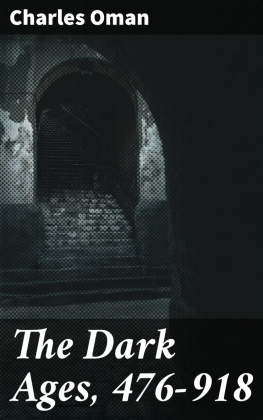This edition is published by BORODINO BOOKS www.pp-publishing.com
To join our mailing list for new titles or for issues with our books borodinobooks@gmail.com
Or on Facebook
Text originally published in 1937 under the same title.
Borodino Books 2017, all rights reserved. No part of this publication may be reproduced, stored in a retrieval system or transmitted by any means, electrical, mechanical or otherwise without the written permission of the copyright holder.
Publishers Note
Although in most cases we have retained the Authors original spelling and grammar to authentically reproduce the work of the Author and the original intent of such material, some additional notes and clarifications have been added for the modern readers benefit.
We have also made every effort to include all maps and illustrations of the original edition the limitations of formatting do not allow of including larger maps, we will upload as many of these maps as possible.
A HISTORY OF THE ART OF WAR IN THE SIXTEENTH CENTURY
by
Sir Charles Oman
PREFACE
SINCE the publication in 1924 of the second edition of my Art of War in the Middle Ages, I have been asked by many friends to continue the survey of military science through that most interesting period the sixteenth century. The subject has received very imperfect treatment by technical historians, who generally hurry on to the days of Gustavus Adolphus and Cromwell, Turenne and Marlboroughconcerning whom there is much narrative and comment. But there is little or none on Gonsalvo de Cordova, Alexander Farnese, or Henry of Navarre. As long as my time was to a great extent occupied by Parliamentary duties, I was unable to find leisure to put together into a logical thesis the results of much varied reading in the authors of a period that extends from Fornovo to Nieuport, starting with Comines and Machiavelli and going down to La Noue and Francis Vere. In the beginning we are still in the Middle AgesFlodden Field or Novara might almost have been fought in the fifteenth century. At the end a formal battle like Nieuport might almost have been fought in the Thirty Years War. This volume is the result of an attempt to sum up the fundamental alterations in the Art of War between 1494 and 1600, and is intended to serve as an outline of military theory and practice between those dates.
It does not, of course, purport to give a complete annalistic record of all campaigns, nor to detail all the changes in military architecture and armament which were characteristic of the century, though I have endeavoured to furnish some account of them wherever they influence the course of events. I have rather tried to explain the strategy, tactics, and organization of armies, and especially (if I may use the phrase) the military psychology of the period. The Great Wars of Italy, the French Wars of Religion, and the War of Independence in the Netherlands all require to be studied from the point of view of contemporary thought. So Machiavellis misguided forecasts, and La Noues Paradoxes and Commentaries are of much more importance than drill books, treatises on artillery, or records of personal adventure. But I am far from underrating the interest of the mental outlook on the times of such personages as Bayards Loyal Serviteur , or that self-centred old swashbuckler Blaise de Montluc. Indeed, one of the gaps in this survey is caused by the lack of any autobiographical record by English military men, till we have arrived at the very end of the Tudor period, when material begins to become abundant from Francis Vere and his less-remembered contemporaries. Pattens narrative of the Pinkie campaign is essentially that of a civilian though an eyewitness. For the earlier Tudor times we have to work from scattered letters and dispatches, and chaotic statistics in State Papers Domestic.
The battles, sieges, and campaigns which I have selected for detailed treatment are all typical examples of the military development of the period, each emphasizing some important phenomenon. For example, Fornovo illustrates the disastrous end of the old Italian theory of manuvres unaccompanied by serious fighting. Ravenna is the first example of a battle won by a completely dominant artillery. The Garigliano and Pavia are victories by surprise, where an incautious enemy is caught before he can get his army into proper array. Marignano and Pinkie are demonstrations of the fact that an old-fashioned infantry-army is helpless against the combination of all arms. Coutras settled the much-debated question as to the relative value of shallow or deep formation for cavalry. Arques is a fine example of the defence of a defile by very inferior numbers. The military moral of each of the other battles or sieges dealt with in detail is emphasized in the course of the narrative dealing with them.
I visited the sites of many of the battles and leaguers described in their volume, e.g. Fornovo, Ravenna, Flodden, Bicocca, Pavia, Boulogne, Calais, Vienna, Pinkie, St. Denis, and others. But in most cases three centuries have obliterated the old topography. The ground at Vienna, and St. Denis is built over by featureless suburbs. At Ravenna and Calais modern drainage has changed the whole outline. Flodden and Fornovo were about the only battlefields which seemed essentially unchanged. The old enceinte of Rhodes is intact, but I regret that I was not able to visit the island. In most instances I have been driven back on to more-or-less contemporary maps and planssome of them a full century too late for certain correctness.
In my earlier book I could give no absolutely contemporary battle-pictures: this disability comes to an end in the middle of our periodfrom Pavia onward there are many contemporary representations of battles and sieges, some of which I have utilized. The Pinkie and Nieuport pictures were designed by eyewitnesses. The Huguenot battles of the great series by Perissot and Tortorelle are at least drawn from the narratives of combatants by artists who engraved them a very few years after the event. I must express my high satisfaction at the way in which Mr. Richard Cribb has dealt with my battle-plans, which have been made admirably clear. My thanks are due to Messrs. Longmans, Green & Co. Ltd. for their courtesy in allowing me to reproduce the German woodcut of the Siege of Rhodes from Major Porters Knights of Malta. Bodleys Librarian and the Curator of the Ashmolean Museum have also been kind in allowing me to utilize the drawing by John Ramsay of Pinkie, and the panoramic picture of Pavia from their respective collections.
My gratitude, so often expressed with regard to former books, must once more be rendered to the kindly hand and eyes which revised my proofs.
C. OMAN
OXFORD, April 1937
MAPS
BATTLE OF FORNOVO, July 6, 1495
CAMPAIGN OF THE GARIGLIANO, December 1503
BATTLE OF RAVENNA, April 11, 1512
BATTLE OF BICOCCA, April 27, 1522
BATTLE OF PAVIA, February 24, 1525
BATTLE OF CERESOLE
( Above : The Localities. Below : Disposition of Troops)
ENVIRONS OF ST. QUENTIN (From Tassins Map of 1631)
CALAIS (Mainly from the map of Stephen the Almayne, 1549)
LOCALITIES OF THE CAMPAIGN OF GRAVELINES, June 31-July 13, 1558








![Charles William Chadwick Oman - Wellingtons Army 1809-1814 [Illustrated Edition]](/uploads/posts/book/291191/thumbs/charles-william-chadwick-oman-wellington-s-army.jpg)
